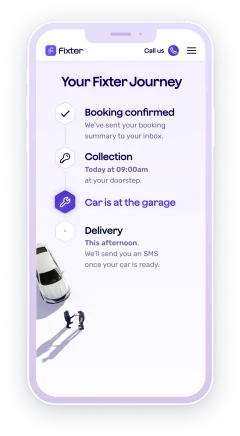Common problems with Kia Niro
When it comes to hybrid vehicles, the Kia Niro has made quite a splash with its eco-friendly credentials and modern design. However, like any car, it comes with its share of quirks and potential issues that owners should be aware of. Navigating these challenges can be daunting, especially if you’re new to hybrid technology or simply want to ensure the longevity of your vehicle. In this blog post, we will delve into some of the most common problems faced by Kia Niro owners, offering clear insights and practical advice in this comprehensive guide to common problems with the Kia Niro. Whether you’re a prospective buyer or a current owner, understanding these issues can help you make informed decisions and keep your car running smoothly.

Introduction to the Kia Niro
The Kia Niro is a popular choice among hybrid car enthusiasts, known for its sleek design and environmentally friendly performance. It also appeals to customers seeking electrified options and reliable vehicles, making it a strong contender in its segment. As with any vehicle, understanding its potential issues is crucial for maintaining its performance and longevity. In this section, we will explore the common challenges that Niro owners may encounter, helping you to navigate these concerns with ease.
Engine and Performance Issues
The engine and performance of the Kia Niro have been praised and criticised in equal measure. While the vehicle offers a smooth ride and efficient fuel consumption, there are specific areas where owners might face challenges. Engine problems have been reported, including symptoms such as loss of power and failures in specific units like the Electric Power Control Unit (EPCU).
Hybrid System Concerns
The Kia Niro’s hybrid system is at the heart of its appeal, but it’s not without its issues. Hybrid systems rely on a combination of a traditional engine and an electric motor to maximise fuel efficiency and reduce emissions. However, some owners have reported that the transition between these systems can occasionally be less than seamless.
One common issue is the lag in power delivery when switching from electric to petrol mode. This can result in a slight delay in acceleration, which might be disconcerting for new hybrid drivers.
Another concern is the regenerative braking system. While it’s designed to recapture energy and recharge the battery, some drivers find the braking feel to be inconsistent.
It’s also important to consider the potential need for battery replacement in Kia Niro hybrid and plug-in hybrid models, as this can involve significant costs depending on the model and battery condition.
Regular maintenance and software updates can help mitigate these concerns, ensuring the hybrid system performs optimally. If you experience persistent issues, consulting a professional is recommended.
Fuel Economy Challenges
Despite its hybrid technology, some Kia Niro owners face challenges with fuel economy. While advertised figures are promising, real-world usage can sometimes fall short. Different versions of the Kia Niro—hybrid, plug-in hybrid (PHEV), and fully electric (EV)—may experience varying fuel economy outcomes.
Driving habits play a significant role in fuel consumption. Aggressive acceleration and braking can negate the benefits of hybrid technology.
Weather conditions can also impact fuel efficiency. Cold weather, for instance, can reduce battery performance.
Maintenance is crucial. Keeping tyres inflated to the correct pressure and ensuring regular engine check-ups can improve fuel economy.
For those experiencing less-than-expected fuel efficiency, it’s wise to review driving habits and consider external factors that might be affecting performance.
Transmission Issues
Transmission problems are a notable concern for some Kia Niro owners, especially those driving the plug in hybrid version. The dual clutch transmission (DCT) used in many Niro models has been the subject of reported issues, including rough or jerky shifting, delayed gear engagement, and occasional juddering during acceleration. These symptoms can be caused by software glitches, clutch wear, or mechanical faults within the transmission system.
In more severe cases, the transmission may require significant repairs or even replacement, which can be a costly undertaking. To minimize the risk of transmission problems, it’s important for Kia Niro owners to keep up with regular servicing and ensure that any recommended software updates are performed. If you notice any unusual behavior from your Niro’s transmission, such as hesitation or rough shifts, it’s wise to contact your dealer or a trusted mechanic promptly. Addressing these issues early can help prevent more extensive damage and keep your hybrid running smoothly.
Brake System Problems
The brake system in the Kia Niro, while generally reliable, has been the subject of some owner complaints. Reported issues often involve the regenerative braking system, which is designed to recover energy during braking but can sometimes lead to squeaking noises, reduced braking performance, or unexpected warning lights appearing on the dashboard. In certain cases, these problems may be resolved by replacing worn brake pads or changing the brake fluid, but persistent issues could indicate a deeper problem within the braking system.
Because the brakes are a critical safety feature, it’s essential for Kia Niro owners to address any brake-related problems as soon as they arise. Regular servicing and prompt attention to dashboard warnings can help ensure your vehicle remains safe to drive. By staying proactive about brake maintenance, you can uphold the Niro’s reputation for reliability and safety on the road.
Suspension and Steering Complaints
Some Kia Niro owners have reported complaints related to the suspension and steering system of their vehicles. Common issues include uneven tire wear, a less comfortable ride, and unusual noises when driving over bumps or rough roads. In some cases, these problems may be traced back to worn shock absorbers or other suspension components that require replacement.
If left unaddressed, suspension and steering issues can affect the overall handling and safety of your Kia Niro. To help prevent these problems, it’s important to schedule regular wheel alignments and have your suspension system checked during routine maintenance. If you notice any changes in ride quality or hear odd sounds from the suspension, consult your dealer or a qualified mechanic to ensure your vehicle remains safe and comfortable to drive.
Electrical System Faults
Electrical faults in the Kia Niro can be a source of frustration for owners, affecting both convenience and functionality. Electrical relay malfunctions, including electrical relay overheating, have been reported and can lead to failures in the vehicle's electrical system, sometimes impacting the display and driver awareness. Understanding these common issues can help you address them proactively.
Battery Drain Problems
Battery drain is a frequent concern among Niro owners. Battery health is essential for the vehicle’s hybrid system, yet unexpected drains can occur.
One reason for battery drain is leaving electronic devices plugged in when the vehicle is off. This can unwittingly drain the battery over time.
Furthermore, some owners have reported that the Niro’s battery management system doesn’t always function optimally, leading to unexplained battery depletion.
To mitigate these issues, ensure that all electronic devices are unplugged when not in use, and consider having the battery management system checked during regular service appointments.
If battery issues persist and replacement is needed, owners should obtain a quote for battery replacement costs. At Fixter, we're here to help, save 30% on average dealership prices!
Infotainment System Glitches
The infotainment system in the Kia Niro is designed to enhance the driving experience with connectivity and entertainment options. However, glitches can hamper its functionality. Accurate information displayed by the system is crucial for safe and convenient driving, and infotainment system glitches have been noted by several owners.
Common issues include the system freezing or restarting unexpectedly. This can be particularly frustrating if relying on navigation or media during a drive.
Additionally, some users report connectivity problems with Bluetooth devices, which can disrupt hands-free communication and media playback.
To address these glitches, performing a system update or reset can often resolve minor software bugs. If issues persist, consulting with a dealership technician for a more thorough investigation may be necessary.
Interior and Comfort Complaints
While the Kia Niro aims to offer a comfortable ride, some owners have voiced concerns regarding the interior and comfort features. Here, we explore the most commonly reported issues.
Seat Comfort Issues
Seat comfort is crucial for an enjoyable driving experience, yet not all Niro owners find the seating up to par. Seat design plays a pivotal role in long-term comfort.
Some drivers report that the seats lack adequate lumbar support, which can lead to discomfort on longer journeys.
Additionally, the material used in the seats might not appeal to everyone, with some finding the upholstery less breathable.
To improve seat comfort, consider using aftermarket seat cushions or covers designed to enhance support and breathability. Regularly adjusting the seat position can also help in finding the optimal posture for driving.
Cabin Noise Troubles
Cabin noise can significantly impact the driving experience, and the Kia Niro is no stranger to this issue. Sound insulation is critical for a serene ride, yet some owners find the Niro lacking in this department.
Road noise is a common complaint, especially at higher speeds. This can be distracting and reduce the overall comfort of the vehicle.
Wind noise is another concern, particularly around the doors and windows, where seals might not be entirely effective.
To tackle cabin noise, consider using sound-deadening materials or upgrading to higher-quality tyres that offer better noise reduction. Checking the condition of door and window seals can also help in minimising unwanted sounds.
Exterior and Build Quality
The exterior and build quality of the Kia Niro are important for both aesthetics and durability. However, some owners have identified areas for improvement. In particular, certain manufacturing defects have been found in specific components, which can affect overall build quality.
Paint and Finish Concerns
The paint and finish of a vehicle are vital for its appearance and protection against the elements. Paint quality is a common topic among Niro owners.
Some report that the paint finish is prone to chipping or scratching more easily than expected, which can be unsightly and lead to rust if left untreated.
Others note that the colour may fade more quickly than anticipated, especially when exposed to harsh sunlight.
To preserve the paint quality, regular washing and waxing can protect against environmental damage. If chips or scratches occur, addressing them promptly with touch-up paint or professional repair can prevent further deterioration.
Body Integrity Problems
The integrity of the vehicle body is essential for safety and performance. Body integrity issues in the Niro can be a cause for concern.
Some owners have experienced alignment issues with doors or panels, which may impact the vehicle's aerodynamics and result in wind noise or water leaks.
Furthermore, there have been instances of rust developing prematurely in certain areas, which can compromise the structural integrity over time.
To maintain body integrity, regular inspections and addressing any alignment or rust issues promptly are recommended. Professional servicing can ensure that the vehicle remains in optimal condition.
Used Niro Models: What to Watch For
Buying a used Kia Niro can be a smart way to enjoy the benefits of a hybrid or plug-in hybrid vehicle at a lower cost, but it’s important to be aware of potential issues before making a purchase. Start by checking the vehicle’s history for any reported issues, recalls, or major repairs. Pay close attention to the infotainment system, brakes, and transmission during your inspection, as these are areas where problems have been reported.
Take the used Niro for a thorough test drive to check for smooth operation and listen for any unusual noises. Inspect the vehicle for signs of wear or damage, and don’t hesitate to ask for maintenance records. For added peace of mind, consider having a trusted mechanic perform a pre-purchase inspection to ensure there are no hidden problems. By doing your homework and carefully inspecting the vehicle, you can find a reliable used Kia Niro that will serve you well for years to come.
Maintenance and Repair Costs
When it comes to maintenance and repair costs, the Kia Niro stands out as an affordable option among hybrid and electric vehicles. Routine services such as oil changes, tire rotations, and software updates are generally cost-effective, helping owners keep their vehicles running reliably. However, some components—like the battery or transmission—can be expensive to replace if issues arise.
To keep costs down and ensure your Kia Niro remains reliable, it’s essential to follow the recommended maintenance schedule and address any issues promptly. Kia’s comprehensive warranty, which includes a 7-year coverage on new vehicles, offers additional peace of mind for owners concerned about unexpected repairs. By staying proactive with maintenance and taking advantage of Kia’s warranty program, you can enjoy a cost-effective and dependable driving experience with your Niro.
Conclusion and Final Thoughts
In conclusion, the Kia Niro offers a blend of eco-friendly technology and modern design, but it’s not without its quirks. By understanding common issues and implementing practical solutions, owners can enhance their driving experience and maintain their vehicle’s performance. The Kia Niro has received a solid reliability score in industry reports and is often compared favourably to its rivals, with owner reports highlighting both strengths and areas for improvement.
Regular maintenance is key to addressing hybrid system and engine concerns.
Monitoring electrical systems can prevent unforeseen faults.
Improving seat comfort and reducing cabin noise can enhance interior satisfaction.
Preserving paint quality and body integrity is crucial for long-term durability.
Ultimately, staying informed and proactive is the best approach to ensuring your Kia Niro remains a reliable and enjoyable vehicle.








